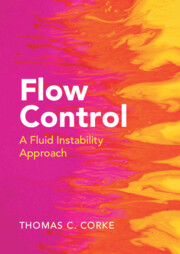Book contents
- Frontmatter
- Dedication
- Contents
- Preface
- 1 Introduction
- 2 Sensors and Actuators
- 3 Bluff Body Wakes
- 4 Separated Flows
- 5 Free Shear Layers and Jets
- 6 Two-Dimensional Laminar Boundary Layers
- 7 Three-Dimensional Laminar Boundary Layers
- 8 Turbulent Boundary Layers
- 9 Shock–Boundary-Layer Interaction
- 10 Flow Control by Design
- References
- Index
4 - Separated Flows
Published online by Cambridge University Press: 04 April 2024
- Frontmatter
- Dedication
- Contents
- Preface
- 1 Introduction
- 2 Sensors and Actuators
- 3 Bluff Body Wakes
- 4 Separated Flows
- 5 Free Shear Layers and Jets
- 6 Two-Dimensional Laminar Boundary Layers
- 7 Three-Dimensional Laminar Boundary Layers
- 8 Turbulent Boundary Layers
- 9 Shock–Boundary-Layer Interaction
- 10 Flow Control by Design
- References
- Index
Summary
Chapter 4 focuses on separated flows that occur in a variety of applications involving external flows, particularly related to aircraft, and internal flows, such as within turbomachines. Flow separation results when the flow does not have sufficient momentum to overcome an adverse pressure gradient, or when viscous dissipation occurs along the flow path. It is almost always associated with some form of aerodynamic penalty, including a loss of lift, an increase in drag, a loss of pressure recovery, and an increase in entropy. This chapter presents both passive and active methods to control these adverse effects.
Keywords
- Type
- Chapter
- Information
- Flow ControlA Fluid Instability Approach, pp. 136 - 174Publisher: Cambridge University PressPrint publication year: 2024

